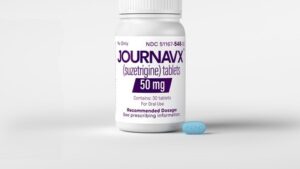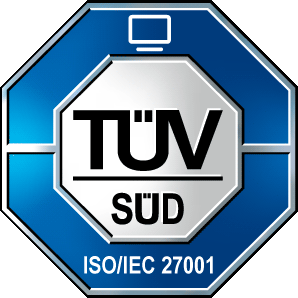Electronic Health Records (EHR) have emerged as a fundamental component of contemporary healthcare, transforming the methods by which patient data is collected, stored, and accessed. As healthcare organizations increasingly depend on these systems to enhance operational efficiency and improve patient care, the importance of maintaining and supporting EHR systems has become paramount. Proper maintenance is essential for ensuring the security, functionality, and compliance of EHR systems, which in turn directly influence the efficiency of healthcare delivery and the safeguarding of patient information.
This article examines the significance of EHR maintenance and support, emphasizing the critical areas that organizations should prioritize to ensure their EHR systems function at optimal levels.
1) Understanding EHR Maintenance
EHR maintenance involves the regular tasks required to ensure the system operates effectively and safely. These tasks can be grouped into multiple essential categories:
System Enhancements and Fixes:
Similar to any software, EHR systems need frequent updates and patches to resolve bugs, tackle security weaknesses, and maintain compatibility with emerging technologies. Healthcare organizations need to guarantee that the EHR software is consistently updated to the latest version offered by the vendor. This encompasses enhancements for both software capabilities and adherence to regulations, including those that align with the Health Insurance Portability and Accountability Act (HIPAA).
Database Upkeep:
EHR systems hold large quantities of patient information, and maintaining the integrity of the database is crucial. Routine maintenance activities involve enhancing database efficiency, securing data backups, and monitoring for possible corruption or data loss. A thorough backup plan guarantees that patient data remains intact during a system failure.
Data Accuracy and Verification:
Maintaining the precision and uniformity of the data in the EHR system is essential for making clinical decisions. Regular validation checks are essential to detect any errors or inconsistencies, like duplicate records or inaccurate entries. Ensuring data integrity also requires confirming that data transfers accurately between various applications in the healthcare organization’s IT framework.
User Permissions and Safety Measures:
Controlling user access to confidential patient information is crucial for ensuring compliance and security. Regular examinations of user roles, permissions, and access records should take place to confirm that only approved individuals can access certain data sets. Furthermore, role-based access control (RBAC) must be implemented to restrict access to confidential information according to job responsibilities.
2) EHR systems
Troubleshooting and Help Desk Services
Similar to any intricate IT infrastructure, might face problems that can interrupt daily activities. Therefore, strong support services are essential to guarantee minimal downtime and avoid interruptions in patient care. 24/7 Technical Assistance Healthcare providers frequently function 24/7, and any interruptions in the EHR system can result in delays in patient treatment. EHR providers usually provide round-the-clock technical assistance to resolve problems such as system failures and decreased efficiency. Promptly resolving these issues is essential to maintain operational continuity and protect patient safety. Education and User Assistance As EHR systems develop, healthcare providers need to remain informed about new features and capabilities. Continuous user training and assistance are essential to reduce mistakes and guarantee that employees can utilize the system efficiently. Support teams ought to offer both in-person and virtual resources to assist users in navigating new workflows, resolving problems, and optimizing the system’s features. Event and Issue Management A crucial element of EHR assistance is efficient incident management. When problems occur, it’s essential to adhere to a systematic approach to address them swiftly. This involves recording incidents, determining the underlying cause, and implementing corrective measures. Problem management entails examining recurring issues and establishing preventive strategies to prevent future incidents.
3) Regulatory and Compliance Factors
EHR systems need to adhere to various regulatory standards, and continuous support and upkeep are essential to maintain that compliance. Failure to comply can result in severe repercussions, such as legal penalties, loss of accreditation, and diminished patient trust. HIPAA Conformity The Health Insurance Portability and Accountability Act (HIPAA) regulates the confidentiality and security of health data in the United States. EHR systems need to undergo regular audits to verify adherence to HIPAA’s strict requirements for data security, access management, and breach reporting. This involves guaranteeing data encryption, establishing secure communication pathways, and keeping access records. Significant Utilization and Interconnectivity The federal government established guidelines for EHR systems to guarantee that they are “meaningful” and enhance patient care. Initiatives such as the Medicare and Medicaid EHR Incentive Program, referred to as Meaningful Use, mandate that healthcare providers exhibit the successful application of EHRs in clinical settings. Moreover, EHRs should be interoperable to enable the smooth exchange of patient information among various systems and healthcare organizations, essential for coordinated care. Data Preservation and Storage Healthcare institutions are required to adhere to legal obligations related to the preservation and storage of patient information. EHR vendors must provide systems that enable secure data archiving and access for compliance and auditing needs. This guarantees that patient records are accessible for the necessary period and can be retrieved for legal or clinical purposes.

4) Monitoring and Enhancing Performance
To guarantee that the EHR system functions at optimal levels, healthcare institutions must consistently track essential system performance indicators (KPIs). This involves evaluating server load, response rates, availability, and system resources. Tools for Monitoring Performance Monitoring tools can assess the overall condition of the EHR system, detecting problems before they escalate into major concerns. These tools are capable of assessing metrics like database efficiency, server load, and network capacity to confirm that resources are utilized effectively. Load Testing and Scalability As the amount of patient data grows and healthcare services expand, the EHR system needs to be scalable to accommodate increased demand. Consistent load testing can pinpoint system bottlenecks and confirm that the infrastructure is capable of supporting future expansion without affecting performance. User Feedback and Continuous Improvement Collecting input from healthcare professionals and staff who interact with the system regularly is crucial for pinpointing usability problems or aspects that can be enhanced. Ongoing enhancement efforts, guided by user input and performance metrics, assist in refining workflows and simplifying operations.
5) Vendor Management and Contractual Support
Numerous healthcare entities depend on external vendors for their EHR systems. Having a solid vendor management strategy is essential to guarantee that the EHR vendor delivers prompt updates, reliable support, and competitive pricing. Important factors to take into account include: Service Level Agreements (SLAs) SLAs specify the anticipated service level that the vendor must deliver, encompassing system availability, response durations for support requests, and assured resolution times for problems. Consistently assessing and upholding SLAs guarantees that the vendor fulfills the requirements of the healthcare organization. Renewal of Contracts and Negotiation Processes EHR agreements must be examined periodically to guarantee they meet changing requirements, such as system enhancements, scalability, and adherence to updated regulations. Vendor negotiations must consider the long-term requirements for both the software and its related support services.
Conclusion
EHR systems serve as a fundamental element of contemporary healthcare, offering the basis for effective, precise, and coordinated patient treatment. Nevertheless, the upkeep and assistance of these systems are equally crucial to their deployment. Consistent updates, thorough support, ongoing monitoring, and stringent compliance with standards are crucial for maintaining the reliability, security, and effectiveness of the EHR system. By dedicating resources to effective EHR maintenance and assistance, healthcare organizations can boost operational efficiency, elevate patient outcomes, and safeguard sensitive data from security threats. Efficient EHR management allows healthcare professionals to concentrate on what is most important—providing quality care to patients.









